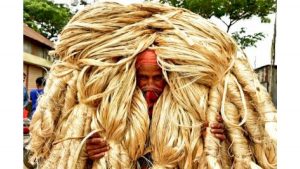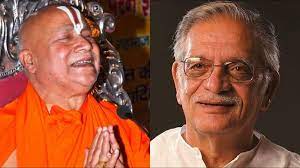Today’s Current Affairs: 20th Feb 2024 for UPSC IAS exams, State PSC exams, SSC CGL, State SSC, RRB, Railways, Banking Exam & IBPS, etc
Table of Contents
Show Cause Notice To Air India : DGCA

The Directorate General of Civil Aviation (DGCA) recently issued a show cause notice to Air India in connection with the incident where an 80-year-old man passed away after he walked to the terminal due to a lack of wheelchair assistance at the airport.
- Director General of Civil Aviation (DGCA) is the regulatory body in the field of civil aviation primarily dealing with safety issues.
- It is an attached office of the Ministry of Civil Aviation.
- It is responsible for the regulation of air transport services to/from/within India and for the enforcement of civil air regulations, air safety and airworthiness standards.
- It also coordinates all regulatory functions with the International Civil Aviation Organisation.
- Headquarters: New Delhi
- One of the main functions of the DGCA is to ensure the safety of passengers and crew members on all flights operating in India.
- The organisation conducts regular safety inspections of all airlines and aircraft to meet the required safety standards.
- It also investigates any incidents or accidents that occur within the Indian airspace and takes appropriate action to prevent similar incidents from happening in the future.
Melghat Tiger Reserve : Message To Save Tigers

The ongoing Kula Mama Volleyball Tournament-2024 in Melghat Tiger Reserve’s (MTR) Semadoh sends a strong message to save tigers and the pristine forest with the involvement of local youths.
- Melghat Tiger Reserve (MTR) is located in the Amaravati district of Maharashtra.
- It is located on the southern offshoot of the Satpura Hill Range in Central India, called Gawilgarh Hill.
- It was established as a wildlife sanctuary in 1967 and was declared a tiger reserve in 1974.
- It was the first tiger reserve in Maharashtra.
- Some of the common species are teak, Lagerstroemia Parviflora, Terminalia Tomentosa, Ougeinia Oojeinensis, Emblica Officinalis, Bamboo, etc.
- Apart from Tigers the other prominent animals are Sloth Bear, Indian Gaur, Sambar deer, Leopard, Nilgais, dhole, hyena, jungle cat, langur, etc.
- It is considered a stronghold of the critically endangered forest owlet.
Ongoing Disinflation : RBI

Reserve Bank of India (RBI) governor recently said recurring food price shocks and renewed flash points on the geo-political front pose a challenge to the ongoing disinflation process.
- Disinflation is a decrease in inflation rates.
- A decline in the rate of increase in the general price level of goods and services in the gross domestic product (GDP) of a country over time is called disinflation.
- Unlike inflation and deflation, which refer to the direction of prices, disinflation refers to the rate of change in the rate of inflation.
- Disinflation is not considered problematic because prices do not actually drop, and disinflation does not usually signal the onset of a slowing economy.
- A healthy amount of disinflation is necessary since it represents economic contraction and prevents the economy from overheating.
- Disinflation is considered the opposite of reflation, which occurs when a government stimulates an economy by increasing the money supply.
- Cause of Disinflation:
- If a central bank wants to enforce a tighter monetary policy and the government starts selling off some of its assets, the supply of money in the economy could be limited, causing a disinflationary effect.
Debt Recovery Tribunal:

The Department of Financial Services secretary chaired a conference of heads of Debt Recovery Appellate Tribunals (DRATs) and Presiding Officers of Debt Recovery of Tribunals (DRTs) in New Delhi.
- The Debts Recovery Tribunals (DRTs) and Debts Recovery Appellate Tribunals (DRATs) were established under the Recovery of Debts and Bankruptcy Act (RDB Act), 1993.
- These are established to provide expeditious adjudication and recovery of debts due to Banks and Financial Institutions.
- At present, 39 Debts Recovery Tribunals (DRTs) and 5 Debts Recovery Appellate Tribunals (DRATs) are functioning across the country.
- Each DRT and DRAT are headed by a Presiding Officer and a Chairperson respectively.
Development And Promotion Of Jute Industry : Report

The Standing Committee on Labour, Textiles and Skill Development has presented the Fifty-Third Report on ‘Development and Promotion of Jute Industry’.
Key Highlights of the Report:
- The Jute industry occupies an important place in the national economy of India. It is one of the major industries in the eastern region, particularly in West Bengal.
- Jute, the ‘golden fibre’, meets all the standards for ‘safe’ packaging in view of being a natural, renewable, biodegradable and eco-friendly product.
- India is a major player in global jute production, contributing 70% of the world’s jute output.
- The Jute industry directly employs approximately 3.7 lakh workers, with around 90% of the production consumed domestically.
- About 73% of jute industries are concentrated in West Bengal (out of 108 composite jute mills 79 are in West Bengal).
- In the fiscal year 2022-23, the production of jute goods reached a significant milestone, totalling 1,246,500 metric tons (MT).
- Exports of jute goods surged to 177,270 MT, constituting approximately 14% of the total production.
- This represents a remarkable 56% increase in exports compared to figures recorded in 2019-20.
- The rise in exports can be attributed to several factors, including increased demand for environmentally friendly and sustainable products worldwide.
- India imported 121.26 thousand MT of raw jute during the same period.
- The importation primarily stems from the preference for high-quality jute from Bangladesh, which is utilised in the manufacturing of value-added products.
- The top export markets for jute goods include a diverse array of countries such as the USA, France, Ghana, the UK, the Netherlands, Germany, Belgium, Côte d’Ivoire, Australia, and Spain.
Jnanpith Award 2023:

The Jnanpith selection committee announced that the 58th Jnanpith Award will be given to two writers, Sanskrit scholar Jagadguru Rambhadracharya and Urdu poet and lyricist Gulzar, for 2023.
Gulzar:
- Gulzar (Sampuran Singh Kalra) was born on 18th August 1934, in the village of Dina, Jhelum district of undivided India.
- He is one of the most respected names not just in cinema but also in literary circles. He is considered one of the finest Urdu poets of his era.
- Gulzar received the Sahitya Akademi Award (2002) for Urdu, the Dadasaheb Phalke Award (2013), the Padma Bhushan (2004), and the National Film Awards for his works.
Jagadguru Rambhadracharya:
- Jagadguru Ramanandacharya, is a polyglot, Hindu spiritual leader, educator, poet and writer. He was born in 1950 in Jaunpur, Uttar Pradesh and speaks 22 languages.
- Rambhadracharya is a poet and writer in several Indian languages, including Sanskrit, Hindi, Awadhi, and Maithili.
- He has written more than 240 books and texts in various Indian languages and received the Padma Vibhushan in 2015.
- Arundhatī, Aṣṭāvakra, Avadha Kai Ajoriya and Dashavtar are some of the literary works composed by Rambhadracharya.
- He is the founder and head of Tulsi Peeth in Chitrakoot, Madhya Pradesh
Jnanpith Award:
- The Jnanpith Award is India’s oldest and highest literary award.
- It’s given annually to an author for their “outstanding contribution towards literature”.
- The award was established in 1961 and first awarded in 1965.
- The Award considers both English and other Indian languages. However, eligibility is restricted to Indian citizens. It is not given posthumously.
- It is presented by Bharatiya Jnanpith to recognize outstanding contributions to Indian literature.
- Bharatiya Jnanpith, established in 1944 by Sahu Shanti Prasad Jain and his wife Rama Jain, is a prestigious literary and research organization headquartered in New Delhi, India.
- Awardees receive a cash prize of Rs 11 lakh, a statue of Vagdevi, and a citation, honouring their literary achievements.
Mandatory Registration Of Marriages:

The Law Commission’s 287th report proposes mandatory registration of marriages involving Non-Resident Indians (NRI) and Overseas Citizens of India (OCI) to address the challenges faced by Indian women deserted by their NRI or OCI spouses.
- The report suggests revisions to the pending Registration of Marriage of Non-Resident Indians Bill, 2019, to include OCIs and enforce new provisions.
- These provisions cover penalties for failure to register divorce, maintenance, child support, and non-compliance with legal procedures.
- The recommendation aims to combat fraudulent marriages and provide legal recourse for women vulnerable to abandonment or exploitation.
Sora : GenAI Model

OpenAI has introduced Sora, a new generative artificial intelligence (GenAI) model capable of converting text prompts into videos up to a minute long with maintained visual quality and adherence to user instructions.
- Sora can create complex scenes with multiple characters, accurate details, and vibrant emotions.
- It still faces challenges with more complex prompts.
- While other companies have ventured into text-to-video technology, Sora is not yet available for general use as OpenAI is ensuring safety protocols and gathering feedback from visual artists and filmmakers.
- The model has weaknesses, such as struggling with complex physics simulations and precise temporal descriptions, but OpenAI is continuously working to improve it.
Cholera Hit Zambia:

India on Saturday sent medical and material assistance to Zambia as the southern African country.
- Zambia has been reeling under an outbreak of cholera over the past few weeks which had prompted a closure of schools in the country.
- Zambia has been asking for more medical help to deal with the situation that has been described as a “cholera emergency”.
- Zambia is alandlocked country at the crossroads of Central, Southern and East Africa.
- The landlocked country has experienced rapid economic growth over the last decade as Africa’s second largest copper producer after the DR Congo.
Cholera:
- Cholera is a bacterial disease usually spread through contaminated water.
- A bacterium called Vibrio cholerae causes cholera infection.
- The deadly effects of the disease are the result of a toxin the bacteria produces in the small intestine.
- The toxin causes the body to secrete enormous amounts of water, leading to diarrhea and a rapid loss of fluids and salts
- Most people exposed to the cholera bacterium (Vibrio cholerae) don’t become ill and don’t know they’ve been infected.
- But because they shed cholera bacteria in their stool for seven to 14 days, they can still infect others through contaminated water.




